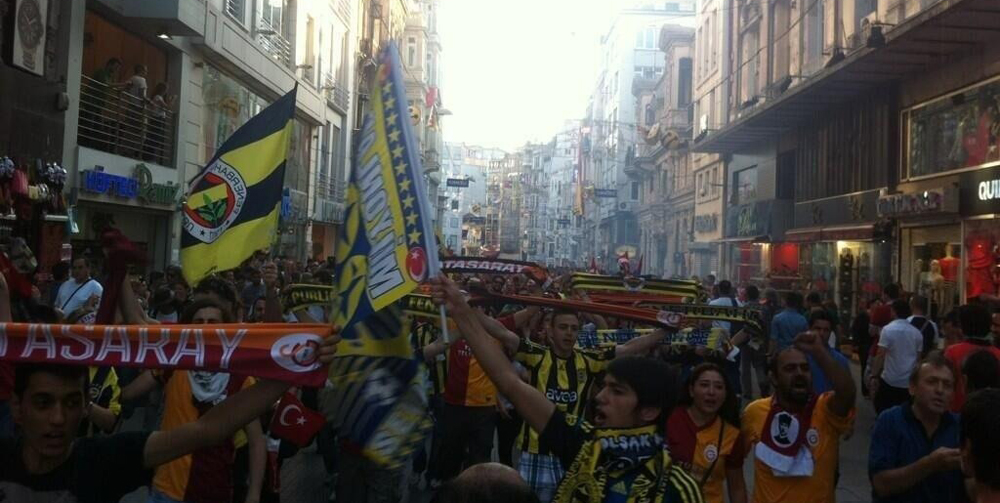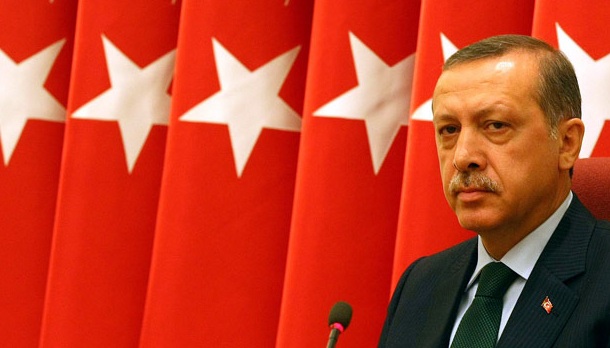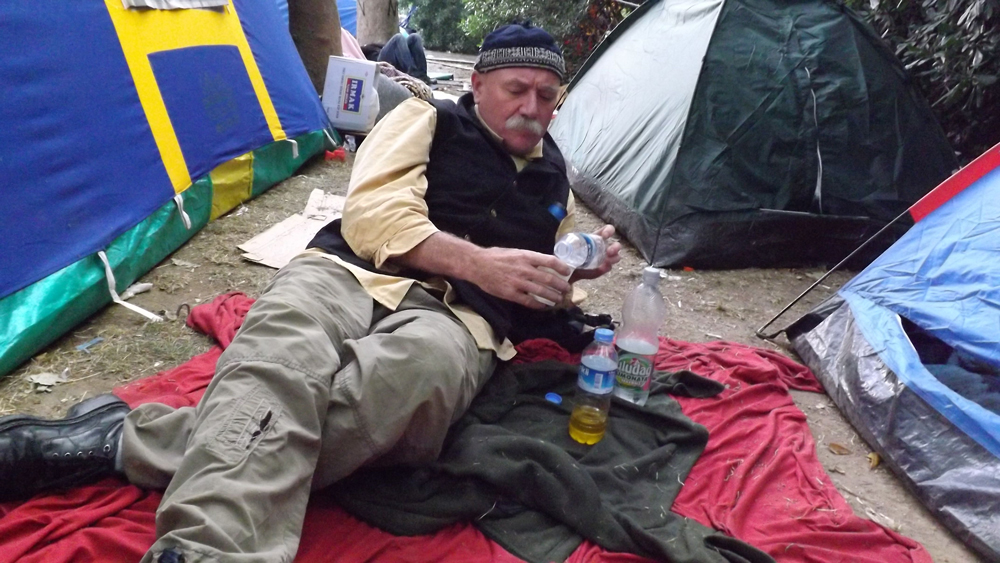ISTANBUL—Turkey is still reeling from what will no doubt become historically known as “The Gezi Park Uprising,” and that process will continue even after you have read this missive.
It arguably began when the seemingly unassailable Prime Minister, Recep Tayyip Erdogan, announced that sprucing up Taksim Meydani, the Times Square of the ‘modern’ part of Istanbul, was to be part of a much larger, ongoing (and very grand) urban renewal effort to prepare this sprawling, Janus-faced city of some 15 million in order to enhance its prospects of hosting the 2020 Olympic Games.
I was traveling from Montana to Azerbaijan when my plane touched down in Turkey on June 1 and landed me smack in the middle of the uprising. The hounds of revolution were loose in Istanbul. There was only one way to handle the situation: I cancelled all plans and decided to stay in Turkey. What was the source of the unrest? What were its implications for the future? And more to the point: Was it really just about a bunch of half-developed sycamore trees?
The quick answer is no, it was not just a discussion about trees. Rather, it was very public discussion about Erdogan’s governing style, hubris and visions of grandeur, and how he aims to leave his mark on his native city, Istanbul, which until just last week looked like a good candidate for the 2020 Olympic Games.
Erdogan’s larger scheme includes the completion of a traffic and rail tunnel beneath the Bosporus, a third Bosporus bridge and a third airport—not to speak of the mushroom-like growth of satellite cities and luxury gated communities built atop former gypsy slums or public space illegally claimed by rural migrants, who previously excelled in the art of slapping up overnight settlements in accordance with ancient law known as ‘gece kondu,’ which literally means ‘put up overnight.’
But all this has changed in Erdogan’s New Turkey. The Center City urban development program, for example, is actually based on a plan. It includes diverting traffic underneath the current clogged wheel hub that is Taksim, and extending a pedestrian zone from the popular shopping and restaurant zone known as Beyoglu (the ‘Pera’ of novels such as Murder on the Orient Express), replacing the rather non-prepossessing, 1950-ish Ataturk Cultural Center with something far more becoming the booming World City that is modern Istanbul (replete with underground parking), and the construction of a grand mosque somewhere in the scheme to offset a 19th century Greek Orthodox church that dominates the far side of the (somewhat tawdry) Taksim architectural ensemble.
Doing something about Gezi Park—a sort of down-at-heel public space that was frequented mostly by drunks and had only been planted with trees in the 1940s after an Ottoman-era military barracks had been removed—was just a fraction of the Grand Taksim Plan. And that plan was moving forward at typical Erdogan speed, despite some paranoid concerns by his secular opposition that his “Islamist” government was secretly planning on building the proposed mosque where the admittedly ugly but still symbolically, staunchly secular Ataturk Cultural Center now stands. And it is this paranoia about Erdogan’s ‘secret’ agenda that is the background to the current political outrage (and physical occupation) of Gezi Park by thousands of Turks from across the political spectrum (aside from Erdogan supporters, who are provably the democratic majority in Turkey).
*
By all accounts, Istanbul (and indeed, the rest of Turkey) is booming in a way that is truly extraordinary and even unimaginable for those who knew the country 20 years ago: the oft-spurned yearning to be part of “the club” of European Union states has been replaced by an attitude of “who cares” about the EU, with Turkey’s seeking (and acquiring) new friends and business partners in the Middle East, Central Asia and Africa for its dynamic construction and manufacturing sectors, that includes everything from washing machines to luxury chocolates under brand names purchased from Belgium and Germany.
“This is all the result of ten years of stability and skilled planning of the current  government,” said my old friend Nihat Gokyigit, a spry 87-year-old America-trained engineer, who (without contradiction) is both one of the great titans of Turkish industry as co-founder of the giant Tekfen Construction and Holding company, as well as the financial force behind TEMA, Turkey’s oldest, largest and most active nature conservation society. His current pet project is a ten-year study to produce a 20-book set of all plant species endemic to Turkey, run out of his 86-acre botanical park and research station on the Asia side of Istanbul.
government,” said my old friend Nihat Gokyigit, a spry 87-year-old America-trained engineer, who (without contradiction) is both one of the great titans of Turkish industry as co-founder of the giant Tekfen Construction and Holding company, as well as the financial force behind TEMA, Turkey’s oldest, largest and most active nature conservation society. His current pet project is a ten-year study to produce a 20-book set of all plant species endemic to Turkey, run out of his 86-acre botanical park and research station on the Asia side of Istanbul.
The area, once a wasteland between two highways, had been reclaimed and is now home to some 50,000 shrubs and trees that exist in seven ecosystems, including a recreated Black Sea rain forest. If you want “Green” or “Tree-hugger” in Turkey, Nihat Bey is your man.
“Erdogan gets things done,” said Nihat Bey over a couple of glasses of yoghurt-and-water drinks called ayran. “Over my career, I can cite countless examples of how previous governments always had to cave into the bureaucrats, stifling and even killing development.”
From his perspective as a retired engineer, Nihat Bey detailed a number of aspects of some of the Get Ready For The Olympics 2020 projects that have garnered the majority of public criticism. The new airport has taken environmental flak because it’s slated to be built in the Belgrade Forest on the European side of the city, abutting the Black Sea. The old-growth forest there is regarded as “Istanbul’s lungs,” even while successive governments going back to the 1970s quietly allowed both Gece Kondus and luxury housing to carve out chunks of it for illegal development.
“Critics ask how many trees will be cut down to make room for the runways, and the answer is ‘very few or none,’ because the planning is to use a massive coal quarry pit that already destroyed that part of the forest,” Nihat Bey pointed out. “And as for the third bridge taking out nature, I am given to understand that any damage will be compensated by a sort of ‘flora and fauna’ overpass, so that birds, frogs and deer can safely pass from one side of their natural habit to the other. This is extraordinarily sensitive environmental engineering.”
So what went so wrong with Taksim and the Gezi Park part of that scheme?
According to Nihat Bey, while no final determination had been made on recreating the 19th century Ottoman barracks—which would have preserved many of the trees planted in the 1940s in the massive courtyard, if surrounded by Ottoman-themed shops or karavansaray-style hotel rooms—the tunnels under Taksim Square itself were well on their way to completion. Then, a decision was made to widen the proposed pedestrian zone by knocking down a row of unattractive buildings (including the first McDonald’s in Turkey) as well as six trees on the edge of the drunkard’s Gezi Park.
Workers had knocked down four of the six when a team of TEMA activists attempted to intervene and stop the up-rooting. That’s when the images of armored riot policemen were captured shooting jets of pepper spray into the faces of women wearing modern dress, along with canon blasts of water sweeping people off their feet.
The images are real and completely damning; they happened. But why?
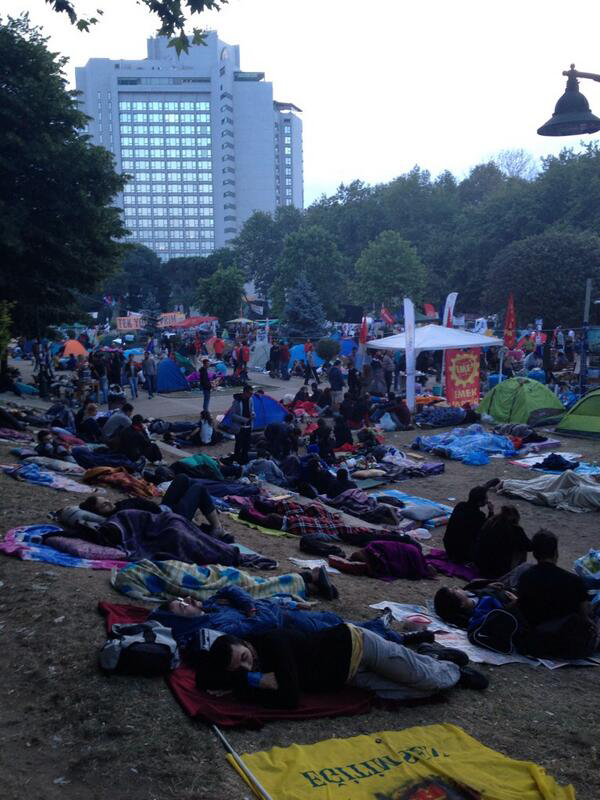 “We at TEMA have stressed again and again that our activists never, ever do anything illegal or challenge the authorities anywhere other than in the media or in court,” Nihat Bey stressed. “Accordingly, I find it very hard to believe that the initial confrontation between the TEMA team and the police over cutting down six trees to widen the road was what led to violence. And while the parliamentary opposition is clearly trying to use this ugly situation to its political advantage, those with the most to gain—creating instability in Turkey—are most likely members of organized, underground groups that created such misery here in the 1960s and ’70s. It is a pity that the youth are following their lead.”
“We at TEMA have stressed again and again that our activists never, ever do anything illegal or challenge the authorities anywhere other than in the media or in court,” Nihat Bey stressed. “Accordingly, I find it very hard to believe that the initial confrontation between the TEMA team and the police over cutting down six trees to widen the road was what led to violence. And while the parliamentary opposition is clearly trying to use this ugly situation to its political advantage, those with the most to gain—creating instability in Turkey—are most likely members of organized, underground groups that created such misery here in the 1960s and ’70s. It is a pity that the youth are following their lead.”
But with the anarchy, there is also among the people an all-too-evident outpouring of pent-up rage against the Erdogan government not only for its gross mishandling of a preventable situation, but other, murkier reasons. The ‘Gezi Park Uprising’ targeted at saving trees is now inextricably linked to a variety of completely extraneous wobbles made by what is perhaps best described (paradoxically) as a wholly overconfident and even arrogant Erdogan government: the refugee crisis in southern Turkey due to the on-going civil war in Syria; the tentative peace deal with the Kurdish Workers Party after negotiations with its imprisoned leader, Abdullah Ocalan; and growing concerns about the disintegration of Iraq.
Domestically, the government apparently made a ‘historic-sensitivity’ error in naming the third Bosporus bridge (the one with the ‘Flora & Fauna’ crossing) after Sultan Yavuz Selim (‘The Grim’) who ruled the Ottoman Empire from 1512-1520, during which time the Ottoman janissaries brought the title of “Caliph” from Mecca to Istanbul. The problem is that while Selim’s memory is thus revered by Sunni Turks, it is equally loathed by the (quasi) Turkish Shi’ite minority known as Alevis, who comprise perhaps 20 percent of the population, and who would have preferred naming the bridge after one of their wine-drinking poets.
But what appears to have served as the real trigger for the anarchy, water-canons and tear gas on Taksim Square is a bill in Erdogan’s AKP-dominated parliament to restrict the sale of alcohol by banning its sale between the hours of 10 PM and 6 AM (and thus perhaps keep late night drunks out of places like Gezi Park).
“Everything he [Erdogan] does is part of his Islamic agenda to turn our country away from 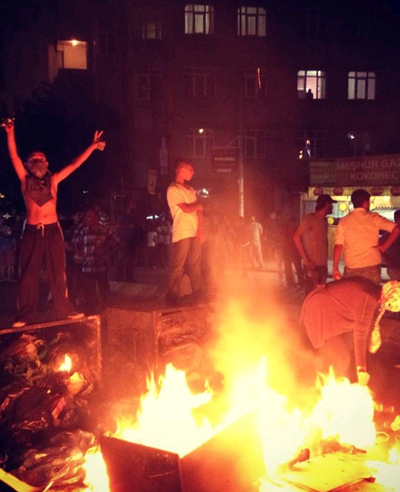 the West where Ataturk brought us, and have us return to our ‘friends,’ like the Arabs and the Muslim world,” snarled my hostess, echoing the sentiments of most secular Turks both in their disdain for Erdogan’s open devotion to Islam, as well as their own nearly religious devotion to the memory of Mustafa Kemal (Ataturk), the founder of modern Turkey in 1923.
the West where Ataturk brought us, and have us return to our ‘friends,’ like the Arabs and the Muslim world,” snarled my hostess, echoing the sentiments of most secular Turks both in their disdain for Erdogan’s open devotion to Islam, as well as their own nearly religious devotion to the memory of Mustafa Kemal (Ataturk), the founder of modern Turkey in 1923.
And when criticized for the No Booze Around Midnight law, Erdogan further infuriated his secular detractors with the following phrase:
“What two lushes want has nothing to do with religion, but only the law.”
The actual term he used was Ayyish, instead of the standard (and lighter) term Sarhosh, meaning ‘just a drunk.’
For the anti-Erdogan devoted Ataturkist secularists, this was a direct slur against the founder (known for his addiction to the Turkish version of pernot, called raki) to Ataturk’s comrade-in-arms Ismet Inonu, who was not even known as a drinking man—and the “two lushes” slur was immediately seized upon as an anti-Erdogan battle cry. When the first street battles between protestors and riot police ebbed long enough for the former to scrawl catchy phrases such as “Cut Four Trees and See What You Get, Tayyib”, “Fuck the AKP” and of course “Fascist Police.” Perhaps the most telling was the rather elaborate “We Are The Grandchildren of the Two Lushes,” coupled with “We drank your ayran and look where we fell.”
Erdogan had recently declared ayran—the yoghurt and water drink I had been sipping with Nihat Bey—the ‘national drink,’ a title previously claimed by Ataturk’s favored raki.
*
Then, late Saturday, June 1st, 2013, Erdogan blinked and (wisely) pulled his riot police off Taksim Square, leaving central Istanbul occupied by thousands of victorious protestors, celebrating their popular victory under a wide variety of (mainly leftist) political banners, but also including a wide spectrum of normal citizens either swept up by some gnawing sense of political dissatisfaction or simple disgust at the widely photographed excesses of the police. There was not a single uniformed cop in that entire area—a bizarre visual phenomenon for anyone who has ever visited Turkey, where gun-totting cops are everywhere.
“If you call 20,000 people into the streets [against me], I will call on one million of my supporters against you!” Erdogan thundered at the parliamentary opposition, shortly before leaving on a state visit to Morocco. He then blamed social media for spreading outrageous lies and pumping up the blood of outrage for all the wrong reasons. ‘Foreign agents’ were also part of the Erdogan blame-package.
By Monday, June 3, Gezi Park—cleaned on Sunday of tear-gas shell detritus and other Taksim Square construction debris—had turned into a block party atmosphere, with student groups chanting national songs as they approached to plunk themselves around the recently adopted trees, and planting new ones.
For ‘Islamist’ Turkish Prime Minister Recep Tayyib Erdogan, the ‘Gezi Park Uprising’ is no doubt the lowest point in his political career—one that is not yet over, and one that has the potential to get much uglier.
The Gezi Park Uprising continues to spread.
There will not be a pretty end to this—and it has nothing to do with trees.
After writing this, I am going to the Saturday, June 8th mass demonstration in a few minutes.
Erdogan is back in town, and his forces are gathering, along with more cops. While he has now (allegedly) promised that Gezi Park will not become a shopping center (talk now is of some open-air “History Museum”), he still insists on the restoration of the Ottoman barracks.
We have not come to an end of this extraordinary week by any means.
Montana-based author, adventurer and academic Thomas Goltz has the bad habit of running into complex international situations, while also having the background to understand them. He has worked in and around Turkey and the Caucasus region of the former Soviet Union for the past 25 years, mainly as a crisis correspondent. He is the author of several books, available on his website, ThomasGoltz.com.
Books by Thomas Gotlz





